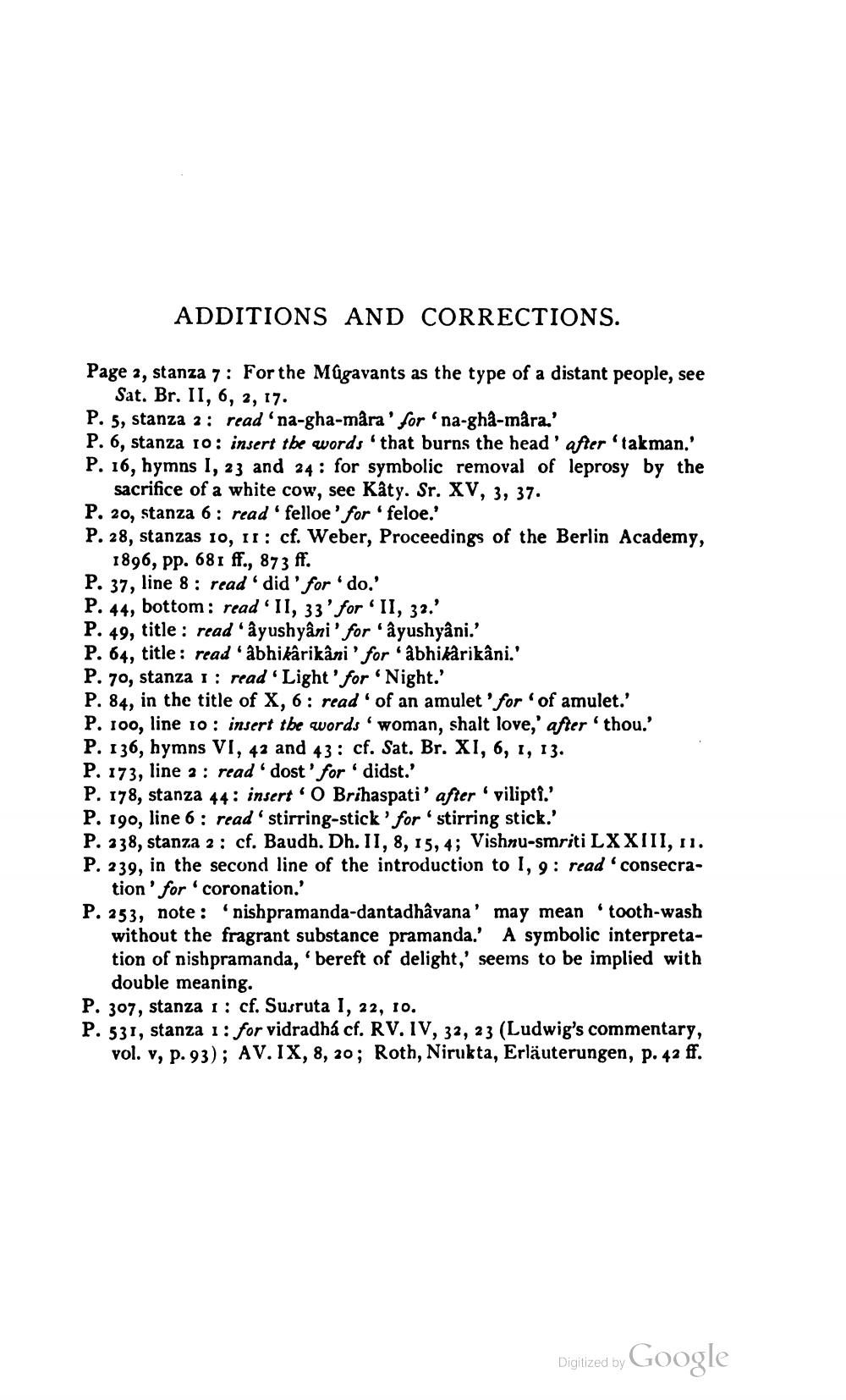________________
ADDITIONS AND CORRECTIONS.
Page 2,
stanza 7: For the Mûgavants as the type of a distant people, see Sat. Br. II, 6, 2, 17.
P. 5, stanza 2: read 'na-gha-mâra' for 'na-ghâ-mâra.'
P. 6, stanza ro: insert the words 'that burns the head' after 'takman.' P. 16, hymns I, 23 and 24: for symbolic removal of leprosy by the sacrifice of a white cow, see Kâty. Sr. XV, 3, 37.
P. 20, stanza 6: read 'felloe' for 'feloe.'
P. 28, stanzas 10, 11: cf. Weber, Proceedings of the Berlin Academy, 1896, pp. 681 ff., 873 ff.
P. 37, line 8: read' did' for 'do.'
P. 44, bottom: read 'II, 33' for 'II, 32.'
P. 49, title: read 'âyushyâni' for 'âyushyâni.'
P. 64, title: read 'âbhikârikâni ' for 'âbhikârikâni.'
P. 70, stanza I: read 'Light' for 'Night.'
P. 84, in the title of X, 6: read' of an amulet 'for 'of amulet.'
P. 100, line 10: insert the words 'woman, shalt love,' after 'thou.'
P. 136, hymns VI, 42 and 43: cf. Sat. Br. XI, 6, 1, 13.
P. 173, line 2: read' dost' for 'didst.'
P. 178, stanza 44: insert ' O Brihaspati' after ' viliptî.'
P. 190, line 6 read' stirring-stick' for 'stirring stick.'
P. 238, stanza 2: cf. Baudh. Dh. II, 8, 15, 4; Vishnu-smriti LXXIII, 11. P. 239, in the second line of the introduction to I, 9: read 'consecration' for 'coronation.'
P. 253, note: 'nishpramanda-dantadhâvana' may mean 'tooth-wash without the fragrant substance pramanda.' A symbolic interpretation of nishpramanda, 'bereft of delight,' seems to be implied with double meaning.
P. 307, stanza 1: cf. Susruta I, 22, 10.
P. 531, stanza 1: for vidradhá cf. RV. IV, 32, 23 (Ludwig's commentary, vol. v, p. 93); AV. IX, 8, 20; Roth, Nirukta, Erläuterungen, p. 42 ff.
Digitized by
Google




